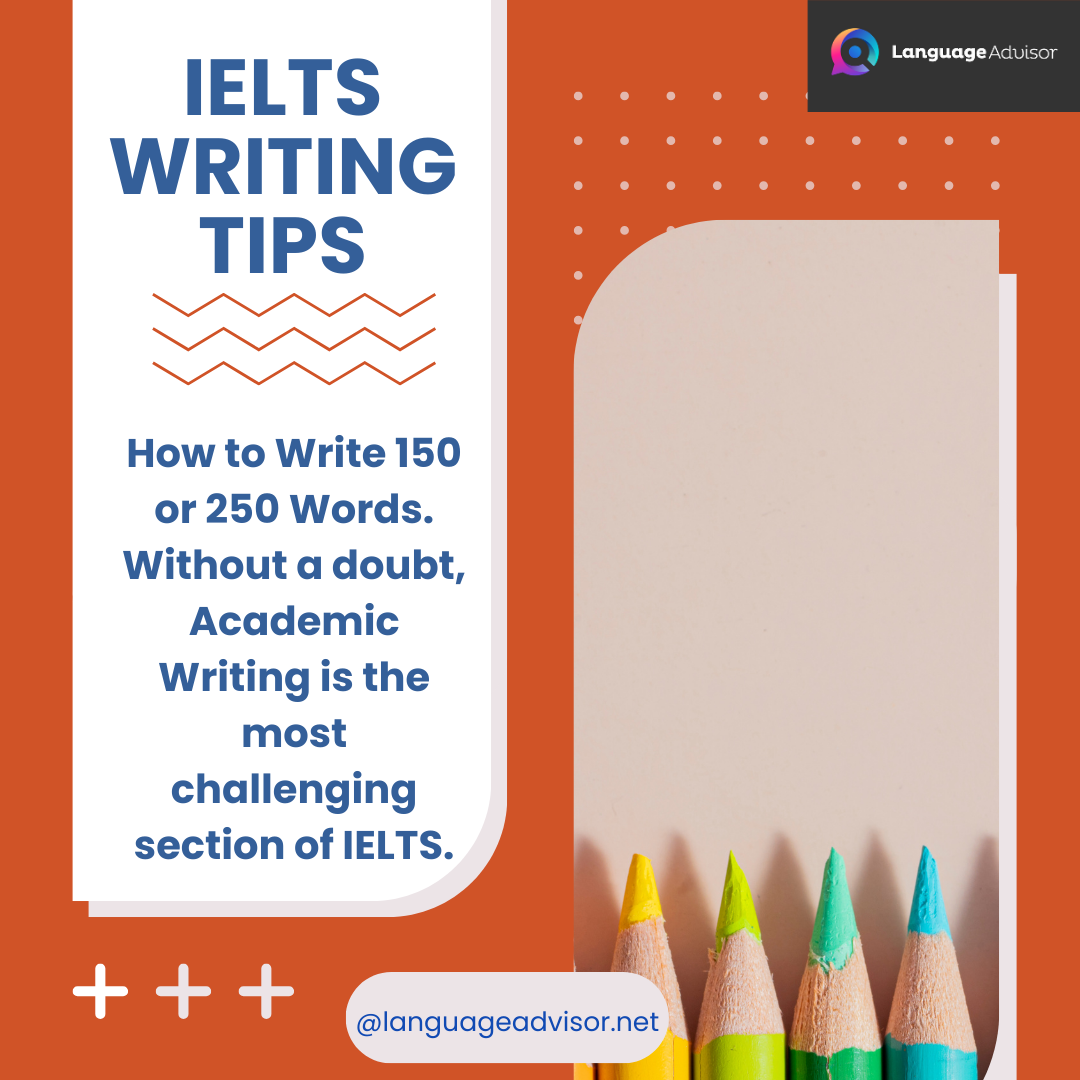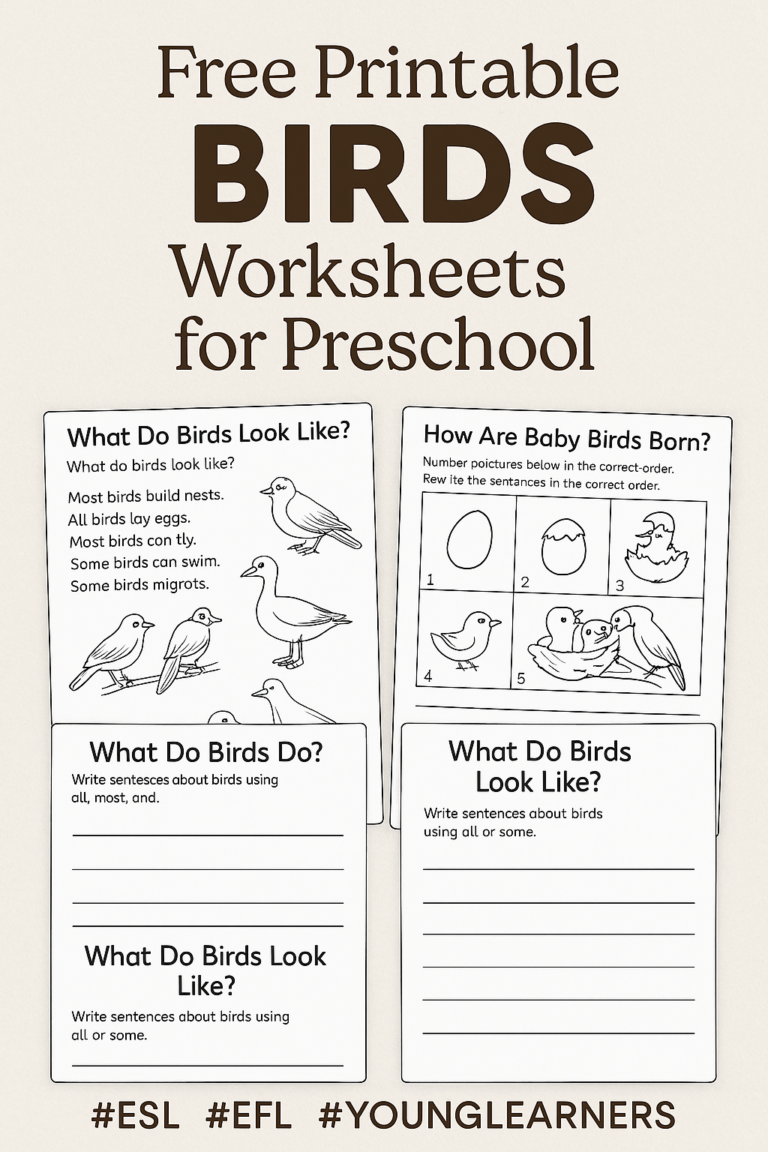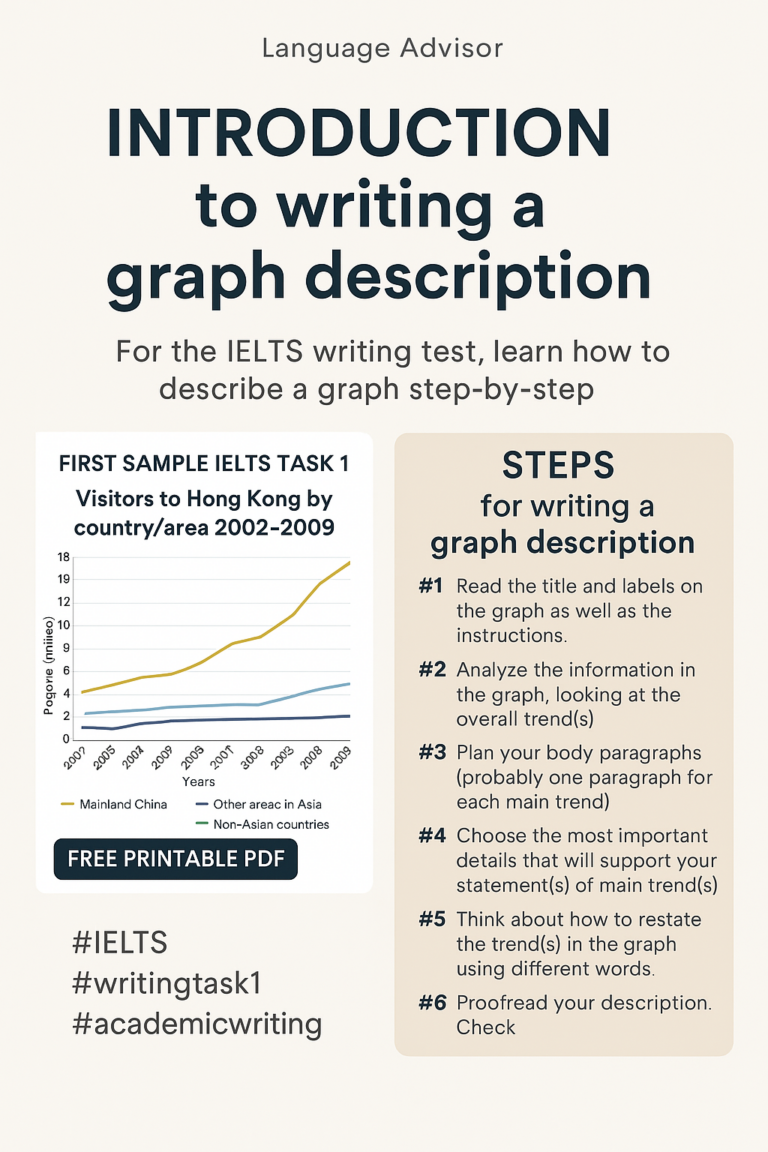IELTS Writing Tips: How to Write 150 or 250 Words. Without a doubt, Academic Writing is the most challenging section of IELTS.
IELTS Writing Tips: How to Write 150 or 250 Words

IELTS Writing Tips: How to Write 150 or 250 Words
Faced with a blank page, you have only 60 minutes in which to write 400 words by hand. This includes 150 words describing a diagram or data, plus 250 words giving your opinion on an issue. It doesn’t help that few people actually write reports or essays by hand nowadays! Therefore, it’s no surprise that writing 150 or 250 words in the time allowed is the biggest concern of many IELTS candidates. And yes, there is a penalty in IELTS if you fail to write enough words. Usually this is a 0.5 reduction in your score. However, when you examine any piece of academic writing, you’ll find that only a small part consists of original ideas, and most of it is made up of structural language. What does this mean? It means that certain kinds of sentences are found in all academic writing, and you can use them regardless of the topic to ensure that you write at least 150 or 250 words.
1: Write a detailed thesis statement
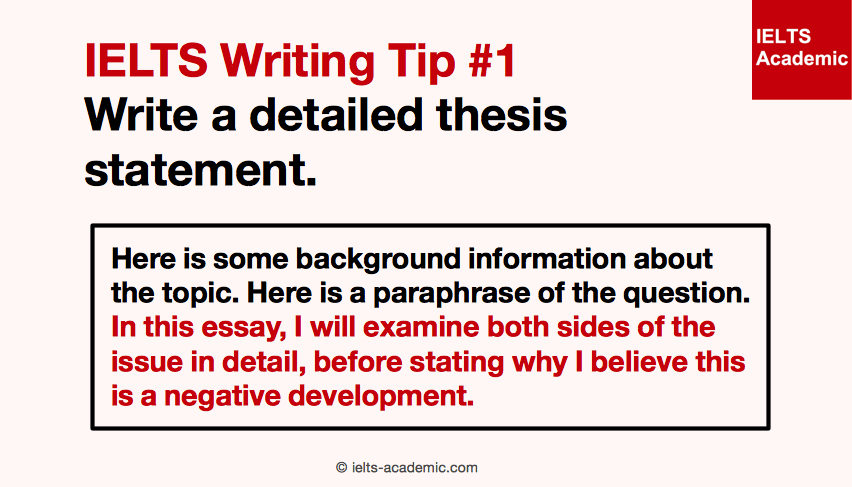
You should already have a clear plan for your Task 2 essay when you begin writing your introduction. Try adding a detailed thesis statement that tells the examiner exactly what you are going to write about in each paragraph. A thesis statement typically begins with “This essay will…” or “In this essay, I will…”. Not only is this a great way to add more words to your introduction, it can increase your score in Coherence and Cohesion, which is based on how well you link your ideas. The technique can also be used in Task 1, though you’ll need to replace ‘essay’ with ‘report’. IELTS Writing
2: Repeat the question topic in each new paragraph
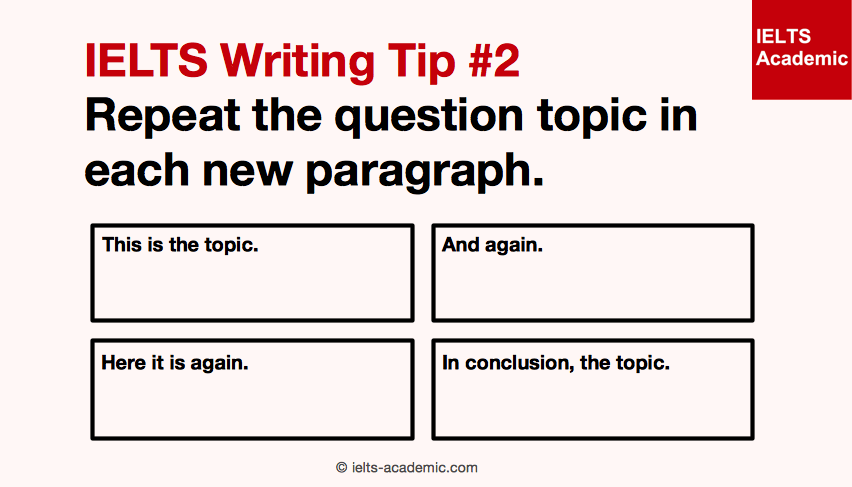
One definition of a paragraph is that it should not depend on other paragraphs in order to be understood. When you begin a new paragraph in Task 1 or Task 2, state the topic again. For example: “Another reason for the decline in academic standards is…” rather than “Another reason is…” Although this may seem like repeating yourself unnecessarily, it helps to create a more academic style of writing. It also helps to move you more quickly towards your goal of writing 150 or 250 words. You’ll get bonus points if you can paraphrase the topic each time you mention it.
3: Write transition sentences

A transition sentence connects two stages in your writing. It may refer to what has already been written, or it may explain what will come next. A good transition sentence can do both: “Having look at X, I will now turn to Y.” They are incredibly useful in both Task 1 and Task 2 of IELTS Writing. They help you write more, even when there isn’t a great deal to say. Just like Tip #1, this writing technique also adds to your score in Coherence and Cohesion
4: Summarise your main points
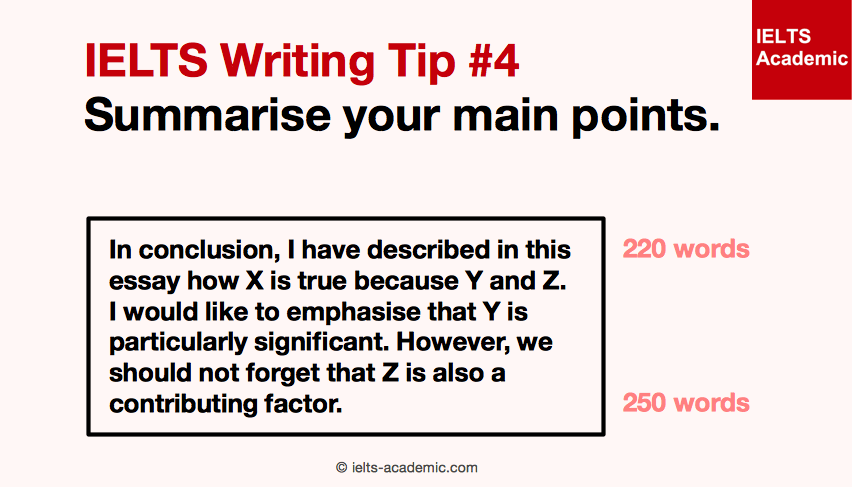
It’s perfectly normal to reach your conclusion and find that you still need to write at least another 50 words! There’s an easy solution to this, of course. Summarising your main points is a great way to get extra mileage out of them, as well as to show off your paraphrasing skills. You should do this only when you need to write those extra words. If your Task 1 answer seems to be at least 150 words already, don’t waste time summarising. Just get straight on to Task 2.
IELTS Writing Tips: Predict the future
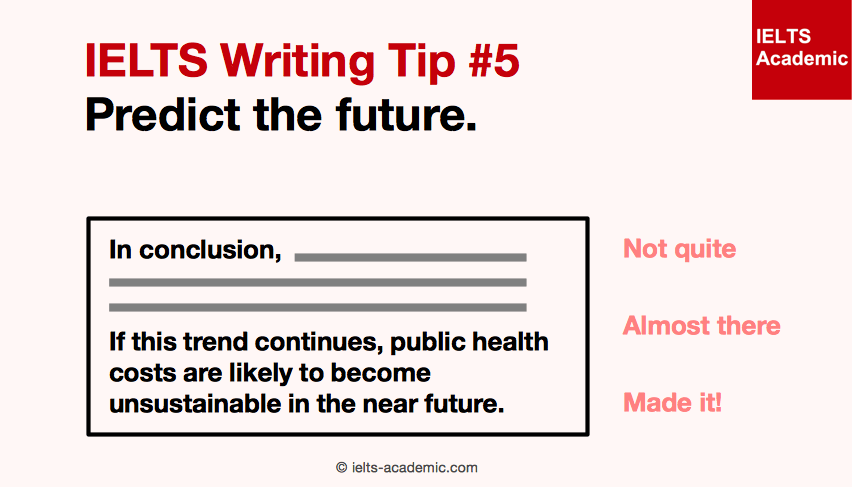
My final IELTS Writing tip is only for use when you’ve summarised your main points but your answer still looks a little too short. It also works for both tasks. In Task 1, look at the data you’ve been given and predict where it’s likely to go in future. Technically, you aren’t supposed to do this, but it’s a perfectly fine technique to add a little extra information. In Task 2, a conditional sentence is a very useful method of predicting the future. If your advice isn’t followed, what could happen?

Also check out these resources to successfully prepare for IELTS


